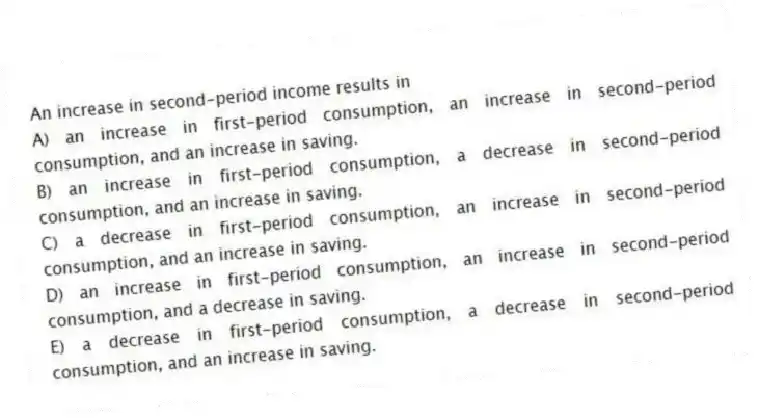
An increase in second-period income results in
A) an increase in first-period consumption, an increase in second-period consumption, and an increase in saving.
B) an increase in first-period consumption, a decrease in second-period consumption, and an increase in saving.
C) a decrease in first-period consumption, an increase in second-period consumption, and an increase in saving.
D) an increase in first-period consumption, an increase in second-period consumption, and a decrease in saving.
E) a decrease in first-period consumption, a decrease in second-period consumption, and an increase in saving.
Correct Answer:
Verified
Q16: Consumption-savings decisions involve intertemporal choice as this
Q17: If we represents a two-period consumer's lifetime
Q18: Intertemporal decisions involve economic decisions
A) made within
Q19: A one-period bond is a promise to
Q20: A key variable in intertemporal choice is
A)
Q22: In the data,which of the following is
Q23: A permanent increase in income leades to
A)
Q24: The property of diminishing marginal rate of
Q25: A consumer is a lender if
A) optimum
Q26: If consumers expect a tax cut to
Unlock this Answer For Free Now!
View this answer and more for free by performing one of the following actions

Scan the QR code to install the App and get 2 free unlocks

Unlock quizzes for free by uploading documents